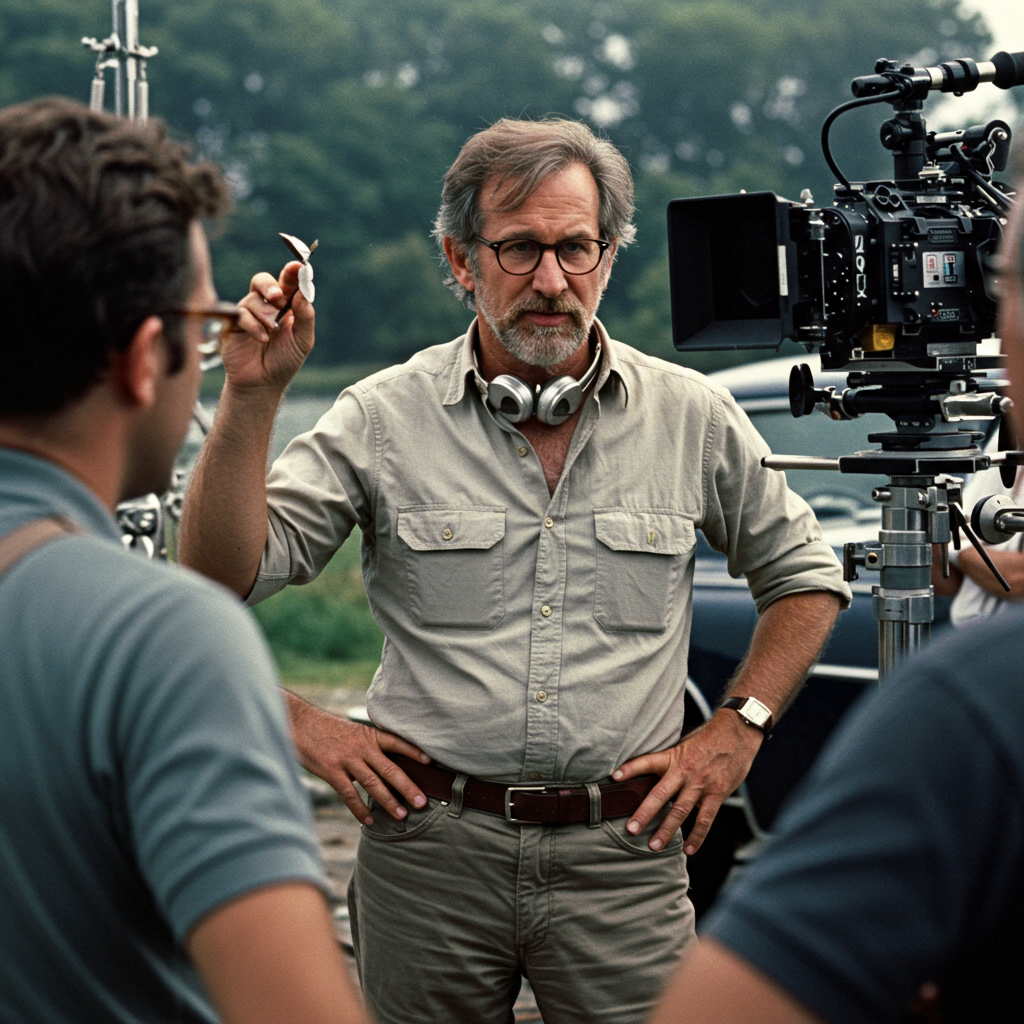Fifty years ago, on May 2, 1974, a relatively young director named Steven Spielberg (then just 27 years old) began filming his fourth feature film, a thriller based on Peter Benchley’s best-selling novel. The location? The picturesque island of Martha’s Vineyard, Massachusetts, which would forever be immortalized as the fictional Amity Island.
While Martha’s Vineyard served as a perfect stand-in for the tranquil seaside town, providing much of the authentic backdrop seen in the 1975 classic (with the notable exception of Quint’s rustic shack), the production itself was anything but tranquil. The film’s move away from studio tanks to the unpredictable open ocean surrounding the island presented monumental challenges, contributing to Jaws‘ legendary status as one of Hollywood’s most difficult shoots.
The Mechanical Menace: Battling Bruce
One of the most significant hurdles was the film’s intended star: the mechanical shark, affectionately nicknamed “Bruce.” Though tested successfully in a freshwater tank on the Universal lot, the intricate prop hadn’t been properly vetted for salt water. The corrosive ocean environment and unpredictable waves meant Bruce was constantly malfunctioning, frequently rendering him “hors de combat” (out of action).
This technical nightmare famously limited the shark’s actual screen time to less than five minutes in the final cut. Yet, ironically, this limitation proved to be a stroke of genius. Forced to imply the shark’s presence through POV shots, John Williams’ chilling score, and the reactions of the characters, Spielberg crafted unparalleled suspense. The unseen threat became far more terrifying than a constantly visible one.
Life on the ‘Orca’ and the Waters Off Amity
Filming on the open water required the cast and crew to spend long, often grueling days at sea, frequently crammed onto support vessels like the tugboat Whitefoot which served as a base for shooting scenes involving the fishing boat Orca. Camera operators and crew members worked tirelessly to capture shots amidst the ocean’s swell.
Key locations across Martha’s Vineyard played their part, adding to the film’s realism:
South Beach in Edgartown: Set the scene for the opening beach party tragedy.
Joseph A Sylvia State Beach: The site of the infamous raft attack scene.
The American Legion Memorial Bridge: Where the shark makes a terrifying appearance swimming into Sengekontacket Pond.
Edgartown Town Hall: Used as the town hall in the movie.
The Brody House: Located in Vineyard Haven, serving as Chief Brody’s home.
Edgartown Town Center: Used for scenes like Chief Brody getting “beach closed” signs.
North Edgartown Ferry Launch: Featured in the tense conversation between Brody and the Mayor about keeping beaches open.
Even the production office in Edgartown pulled double duty, serving as the on-screen police station for Chief Brody.
Casting the Iconic Trio and On-Set Dynamics
The film’s success also hinged on its compelling human element, brought to life by a remarkable cast. Roy Scheider, known for roles in The French Connection, anchored the film as Police Chief Martin Brody. Richard Dreyfuss, following American Graffiti, played the eager oceanographer Matt Hooper, and the veteran stage and screen actor Robert Shaw, fresh off The Sting, embodied the hardened shark hunter Quint.
Joining them were actors like Susan Backlinie, memorable as the film’s first victim, and Jay Mello, who played Brody’s son Sean. Producers Richard D. Zanuck and David Brown were instrumental figures, having first seen the potential in Benchley’s novel and famously backing the young Spielberg despite the production’s escalating costs and delays. Zanuck, in particular, was a key mentor in launching Spielberg’s career.
While the on-screen chemistry between the lead actors is undeniable, the behind-the-scenes reality wasn’t always smooth sailing. There was documented tension, particularly between the seasoned Shaw (who reportedly struggled with drinking) and the younger, less experienced Dreyfuss. However, this real-life friction is often cited as having inadvertently fueled the powerful, dynamic performances seen in the film, adding layers to their characters’ conflicts and eventual bonds. Despite the pressures, moments of levity were captured, such as Dreyfuss and Scheider singing together during breaks.
Rare Glimpses: Photos From the Set
Now, coinciding with the film’s 50th anniversary, rare glimpses into this challenging yet creative period are emerging. Photojournalist Peter Vandermark, who had “unfettered access” to the set in July 1974 while working for a local paper, captured candid moments that haven’t been widely seen since their initial publication decades ago. These newly rediscovered photographs, featured in publications celebrating the anniversary, offer an intimate look at the cast and crew – including Spielberg, Scheider, Dreyfuss, and Shaw – both during intense filming sequences, like the harpoon scene on the Orca, and in relaxed moments between takes. Vandermark’s photos showcase not just the technical aspects, but the human side of the monumental effort to bring Jaws to life.
Celebrating 50 Years of Fear
Five decades later, Jaws* remains a masterclass in suspense, widely credited as Hollywood’s first true summer blockbuster. Martha’s Vineyard continues its deep association with Amity Island, and fittingly, the island is set to host a weekend of 50th-anniversary events starting on June 20th, the film’s original release date. The legacy of the film’s difficult production, its groundbreaking scares, and its unforgettable characters continues to fascinate audiences worldwide, even inspiring new works like the play “The Shark Is Broken,” which humorously dramatizes the legendary struggles of the three lead actors on set.

